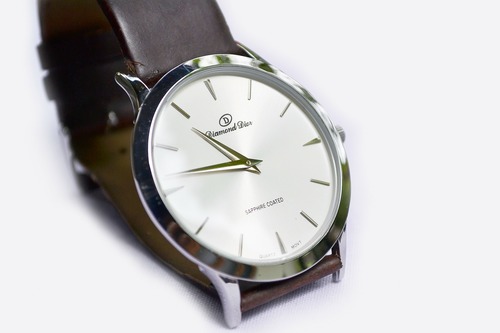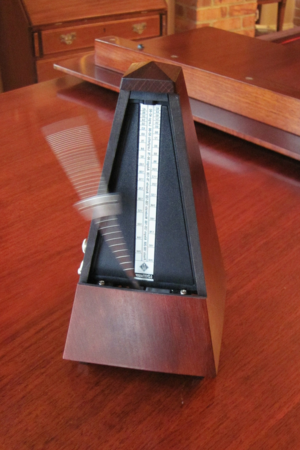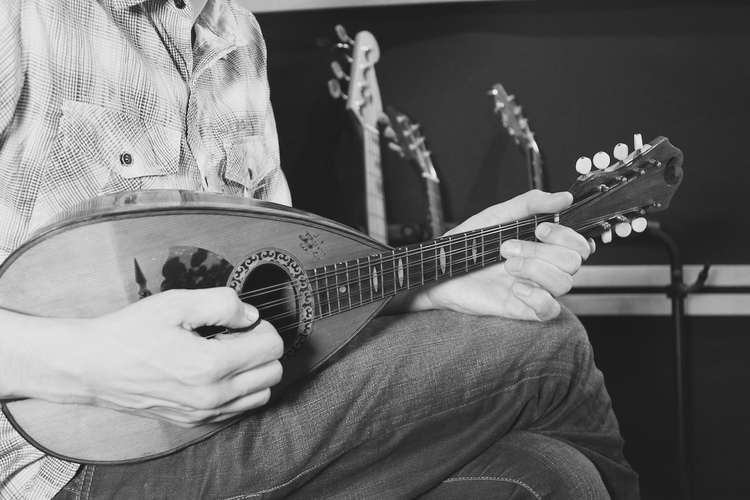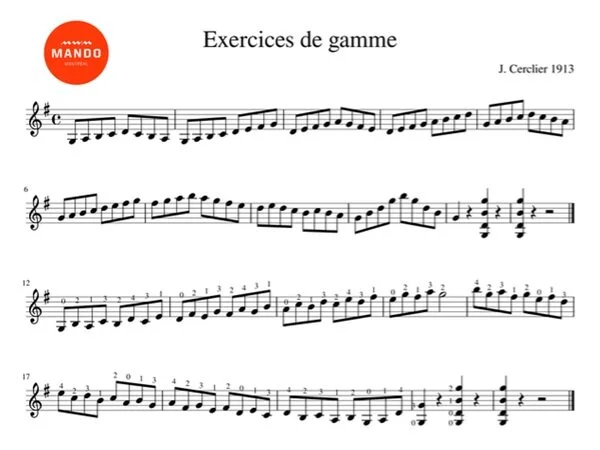How to Play Classical Mandolin
Daily practice tips & tricks
By Jean Comeau
The Austrian composer and guitarist, Luise Walker (1910 — 1998) used to say: " Ube mit Geist und spiele mit Seele ". I know it’s not the exact translation, but here is how I understand this sentence:
" Practice with your head and play with your soul. "

The time we devote to practicing is always too short. We would love to devote more time to the improvement of our technique but there is always work, kids, meals to prepare, garbage bags to take out… phoney excuses! Let's be frank! The time we devote to practicing is the time we decide to devote; it's a matter of choice, a matter of priority.
In any way, our "temporal pettiness" is the main reason why we should do everything we can to make the most out of the time we spend practicing. And the best way to make the most out of the time we spend is to "practice with our head". We'll be all the more rewarded when we see, later, how beautifully we can play with our soul.
But what is meant by "practicing with our head"? When I was studying to become a teacher, one of the professors constantly repeated: "If you can't say precisely what you're teaching, it's probably that you're not teaching anything". And it's the same with learning: "If you can't say precisely what you're learning, it's probably that you're not learning anything".
To better understand this idea, let's look at what happens when we learn a new language. Let's be masochistic and say we are learning German. First of all, we don't "learn German". Learning a foreign language is to acquire a large amount of knowledge and to develop an impressive sum of skills and reflexes.

In fact, what we actually learn are new sounds (Ö, Ü,Ä), sometimes new letters (ß), words (Straßenbahnhaltestelle), the meaning of these words (tram stop), how to spell these words, the relationships of these words in sentences,
the declensions of these words, whether it's simply masculine — feminine or, even worse, nominative, accusative, dative, genitive and so on until we're able to chat rather freely with a native. Quite a rough path before wishing to meet " Ein Mann und eine Frau " at the " Straßenbahnhaltestelle ", to sit on a "Bank" with them and read the Grimm brothers' Rockäppochen!
Each of these learnings ( sounds, letters, words, and skills ) has his special requirement: if we decide to memorize a list of words we must learn to recognize them, to pronounce them, to write them, to spell them, to use them in sentences, to conjugate and we must repeat these operations until they become a reflex. Each of these operations requires a different way of working.
It's the same with the practice of a musical instrument. We don't learn "Music" no more than we learn "mandolin". We acquire a whole lot of knowledges and we develop a mountain of skills that we practice until they become a reflex. If we want our learning to be efficient we must proceed exactly as if we were learning a new language or if we were learning physics or chemistry. And, one thing is indisputable, it's much more difficult than learning German!
Let's start with a little warm-up exercice.

If we play this little piece slowly, while placing each finger precisely at the right place on the finger board, striking precisely the two strings of each course with the pick, it helps "awaking" the muscles of the fingers, it also helps to relax the right wrist and to put us in the right mood for a good long daily practice.
It's a nice start; but nothing more than a warm-up exercise. Such an exercise, being rather easy, allows us to concentrate on the physical work; but, also, it must become the opportunity to "learn something".
Let us approach this exercise by concentrating consciously and exclusively on playing the notes precisely, with clearness, without any buzz or background noise, looking for a sound that is round, rich, the best sound that our instrument can produce. What we just did, is set a learning target. Setting learning targets is what I call "practising with our head".
The learning target is the key to knowledge acquisition and skills development, would that be in science, art, sport, etc. What will happens if we approach this exercise with, constantly in mind, our learning target? We'll realize that certain notes are less precise, less rich; we'll look for an explanation and try to correct the way we play.
We'll notice that a certain finger (probably the fourth) is weaker, that it often falls at the wrong place on the fingerboard, sometimes right on the fret causing the annoying buzz we all know too well! We just made a diagnosis: starting from our diagnosis, we'll start looking for ways, an exercise maybe, to solve this problem.

Elsewhere,we'll see that we only strike one string of a course. Later, we might notice that when we are down picking the sound is much too different than the one we ear when we are up picking. Or, if we play faster, the coordination between the pick and the left hand fingers lacks precision.
While playing very slow, maybe we pull a bit on a string causing a sour note. We'll want to find solutions; we'll look for short exercises; maybe we'll compose a few; we'll ask a professor for help, or a fellow mandolinist. We'll check our progress, we'll go back to easier exercices, play slowly, with more precision, we'll try different ways to hold the pick, maybe we'll try a different pick, we'll try finger exercises, we'll try faster.
Target + practice + diagnosis + correction = learning.
To push a little further our learning, without even changing the exercise, we can give ourself new challenges. We can change rhythm:

or change picking:

We keep on looking for precision, strength of the fourth finger, coordination, velocity; we diagnose, correct, evaluate.
Let's push a little further again; we'll use variations of the same exercise to increase the level of difficulty. We can vary the tone color or dynamics but always keeping in mind the same learning target which is a search for precision, for richness of the sound. Do I lose precision, coordination, velocity when I play "sul tasto", when I play "sul ponticello"? In his "Methode (sic) raisonnée pour passer du violon et de l’archet a la plume" Gabriele Leone (1725—1790) offers an exercise that we have modified to meet our learning target.

We will probably follow this learning target for many weeks or even months (years?) before we reach a satisfying result. To avoid monotony we can pick a few exercices from a great variety of sources. The exercises books composed for violin are almost inexhaustible collections. Let's take a look at this exercise from Franz Wolhfahrt's (1833—1884) Soixante Exercices available at low price from Schirmer's editions (that's it, the yellow ones!)

We can repeat all the variations we already practiced with this exercise: we can change rhythm, picking, tone color, dynamics, etc. But we must always be careful to practice this piece while "concentrating consciously and exclusively on playing the notes precisely, with clearness, without any buzz or background noise, looking for a sound that is round, rich, the best sound that our instrument can produce".

Setting a learning target, practicing, diagnosing, making adjustments according to our recent progress, setting new challenges, practicing, adjusting, diagnosing… We are almost done with the learning cycle. Let's look at the final stage, probably the most important of all:
the evaluation.
To measure our progress, we'll take the same type of exercises that we used previously: mainly the same note value, short intervals, written in an "easy" mode, G, F or C major (even if F major is sometimes a bit tricky on the mandolin!). After a few preliminary readings, we'll try to verify how easily we now can play "the notes precisely, with clearness, without any buzz or background noise, looking for a sound that is round, rich, the best sound that our instrument can produce", or, in other words, if we have reach our learning target. We'll play this new exercise changing rhythm, picking, tone color, dynamics while evaluating our progress.

In our next article we'll come back to the learning cycle (Target + practice + diagnosis + correction + evaluation). We'll see how we can set learning target to work on the tremolo starting from an initial assessment. We'll go deeper in the notion of diagnosis—correction.
Tremolo is probably the most important technique at least for the romantic era. Here's what Calace writes at the beginning of his famous method:
"The tremolo is the most important thing for the mandolin; in itself lies all the charm that originates from the sound peculiar to this instrument, this exquisite suggestion that captivate the listeners…"
To conclude, here is a little exercise taken from Giuseppe Branzoli's (1835 — 1909) mandolin method. We reproduce this piece simply because it's beautiful. The composer from the romantic era like Ferdinand de Cristofaro (1846 — 1890) and Jules Cottin (1868 — 1922) used to insert what they call "recesses" in their methods which were, sometimes, quite "dry"! So, let's consider this little piece as a recess; with a little emotion and a touch of well-placed tremolo, nobody can resist!

JEAN COMEAU
For Mando Montreal









